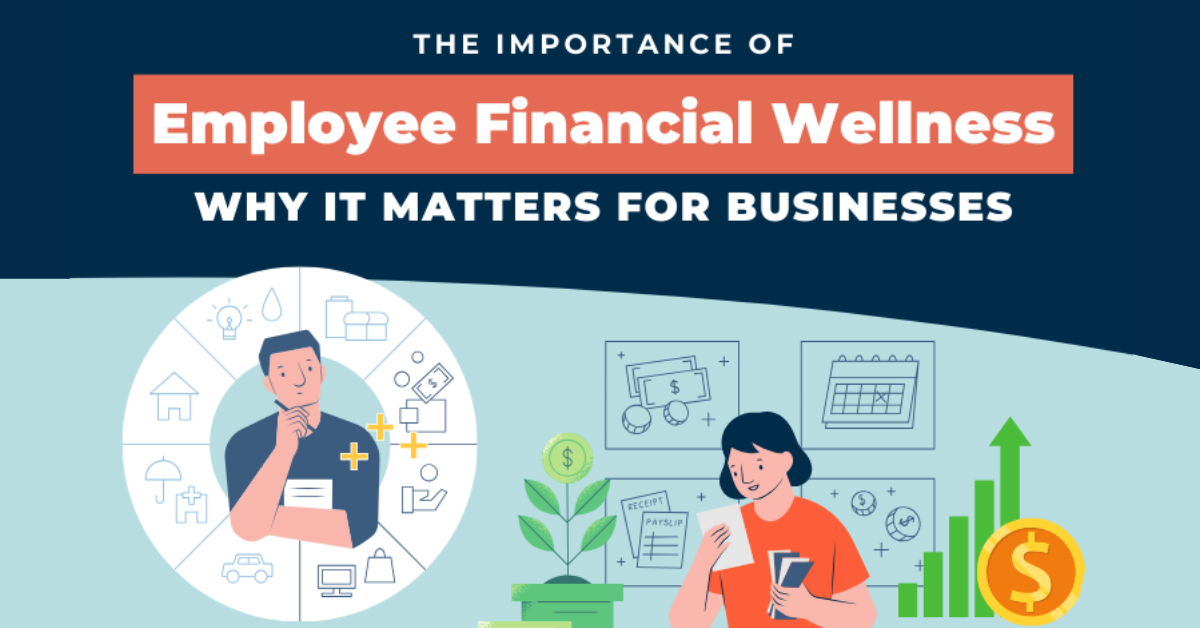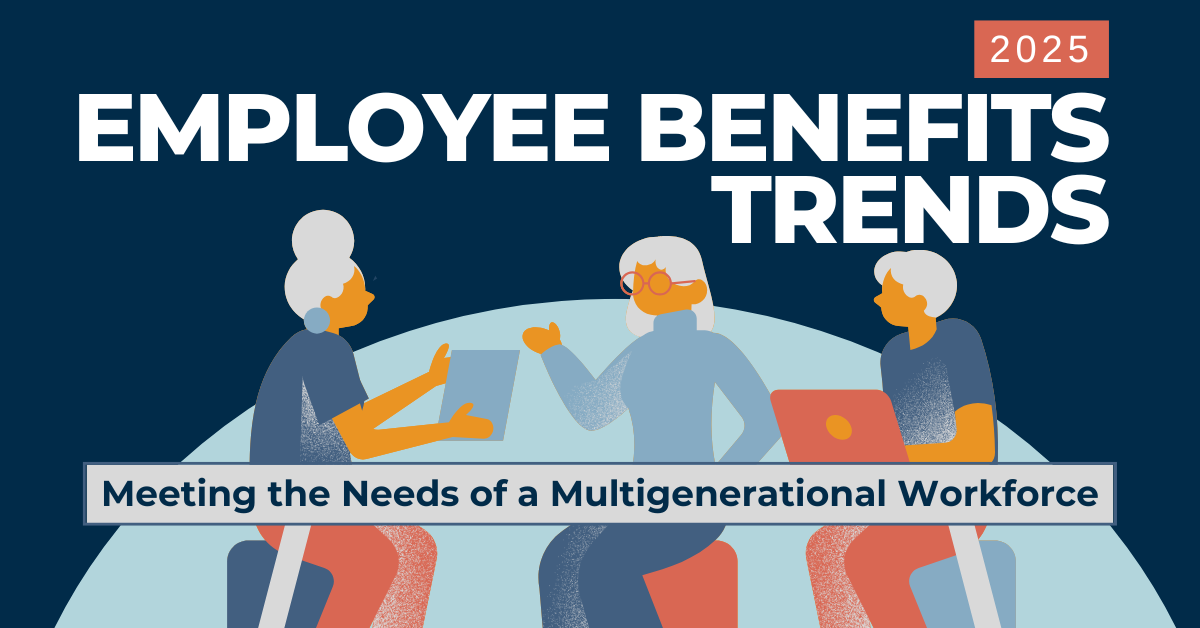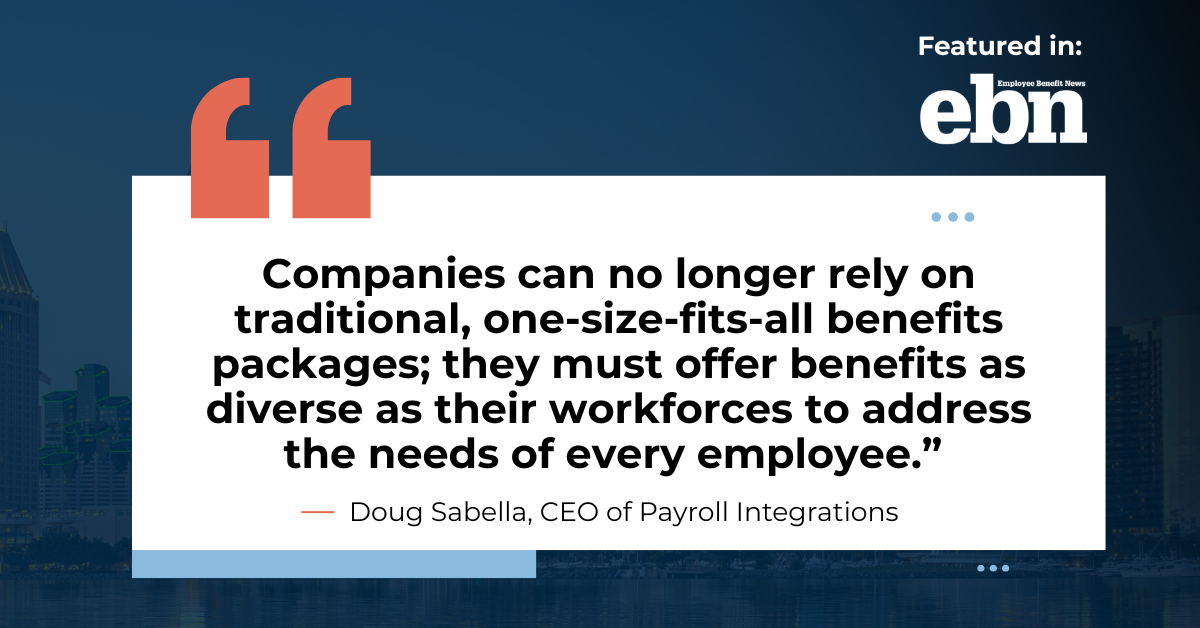How to Tailor Financial Wellness Strategies for Different Age Groups
Developing an employee financial wellness strategy should be a top priority for employers in today’s challenging, inflationary economy. As business managers, your people are your greatest asset no matter how much hype is around the latest industry innovation.
Maximizing employee financial wellness with better employee benefits and employee benefits education is a key strategy across generations for any employer seeking to maximize not only the financial health of their employees—a good in and of itself for the company as it promotes stability and retention—but productivity.
Yet, how you approach your financial wellness strategy needs to be tailored for each workplace, accounting for generational differences that inform employee priorities.
New data from Payment Integrations and Dynata has found some key differences between generations on their financial wellness priorities, with major implications for how employers think about their strategies, benefits provision and investments.
Why focus on employee financial wellness today?
For years, studies have demonstrated that financial stress carries risks for higher levels of depression, anxiety and generally poorer task performance; today, financial stress is ubiquitous.
Recent studies by Bankrate have found that while the U.S. is not officially in a recession, 59% of U.S. adults already feel like it is, and 69% of Americans feel their cost of living has worsened from 2020 to 2023.
Worse, just 48% of Americans report having the emergency savings they need to cover three months of expenses, and 22% report having no emergency savings whatsoever. A 2023 report by SHRM found that employee financial wellness has dropped “to a new low.”
Moreover, employers continue to struggle with a challenging labor market that hasn’t significantly improved since the lockdown era. The U.S. Chamber of Commerce continues to regularly report on not only the ongoing global worker shortage but a severe skills shortage in some industries (such as high-level cybersecurity).

A new report by Korn Ferry finds that by 2030, $85 million jobs could be left vacant due to a lack of skilled individuals to fill them, making for a deficit in economic activity to the tune of $8.5 trillion. Recent surveys from PWC have found that the much-publicized mass resignations of 2021 have formed an ongoing trend.
To remain competitive in a labor market starved for workers, skills, or both, you need to offer packages better than the competition, especially when a majority of employees now say that they would refuse a competing job offer if retirement plans (67%) and health insurance (65%) were not part of the benefits package.

New data on generational differences in financial wellness
An employee financial wellness program refers to any employee-sponsored program aimed at the financial health of employees (and, preferably, their families) while considering how it fits into the company’s broader employment strategy, revenues, and projections.
Many tools and managed services exist today to help organizations cope with their HR needs for retirement planning, timesheets, tax compliance, employee financial education, and benefits provision, all essential functions for a well-oiled operation full of satisfied employees.
Yet, even with the right tools in place, you need to know what your goals are. When it comes to financial wellness, your goals and your employee’s needs and priorities should be aligned.
Payment Integrations' 2024 State of Employee Financial Wellness Report dives into what employees expect of employer-driven wellness programs and benefits provision and whether that conflicts with employer views within a multigenerational analysis.
The report collected survey data in April 2024 from 250 respondents—both employee and employer—aged 18-65.
Tailoring financial wellness strategies for generational differences
While the survey made a range of discoveries, several generational disparities stood out, offering employers a deeper view into what each age group most values.
With these insights in hand, several recommendations can be made for how employers can better understand their employees' needs and tailor their financial wellness strategies to account for the needs of their unique workforce, no matter the generation.
Identify your employees' pain points
In surveying your workforce and tailoring benefits packages, organizations must be certain to key into the most commonly reported pain points.
Surveys—circulated internally—can help you to better understand what your unique workforce most cares about through anonymous data collection.
Lessons from such research can include revealed preferences within survey data, or things that are implied but not explicitly stated, such as the financial status of a given employee group (credit scores, owning vs. renting, etc.).
In Payment Integration’s study, when each generational group was asked whether they perceived themselves as well-off financially, Millennials most often reported themselves as well-off; 65% of Millennials reported feeling in ‘complete control’ of their finances compared to 59% of Boomers and 54% of Gen X employees.

Meanwhile, only 33% of Gen Z report the same. When employees were surveyed on how financially stable they actually were, 41% of Millennials were ‘completely’ stable compared to 38% of Boomers, 36% of Gen X, and a mere 27% of Gen Z.
This is likely at least in part due to often-reported generational wealth gaps in the U.S., particularly between the oldest and youngest generations.
The results above do not capture the fact that, as a generation, both Millennials and Gen Z continue to be $94 trillion in wealth behind Boomers according to reports by the Federal Reserve Bank of New York.
That said, the reason Millennials through to Boomers report more uniform financial stability compared to Gen Z may also simply have to do with how new Gen Z is to the workforce.
Why does it matter? If your employees are predominantly younger or even Gen Z—more common in service and tech industries, for example—employers may want to eye benefits packages that provide them the most direct, short-term value to help them with the cost of living.
As we will see below, survey differences in benefits package preferences between generations help to demonstrate that, on average, younger generations do prioritize more immediately useful benefits over (e.g.) more in-depth retirement offerings.
Get creative and invest in what your employees actually care about
In line with the U.S. Chamber of Commerce’s recommendations for how organizations can combat rising resignations, another key strategy for ensuring financial wellness across generations involves getting creative with your HR strategies and diversifying the benefits provisions on offer to suit employee needs.
That could mean offering more non-traditional benefits or employee perks to provide an added sense of value.
To do that, you need to know what your particular employees truly care about. Within the survey data, key differences were found in how differing generations prioritize benefits. While the two top categories are valued across generations—healthcare (72%) and retirement (73%)—the degree varies between each generation.

Aside from the top two, 38% of Gen Z (aged 18-26) were most focused on ‘lifestyle benefits’ (such as employee perks), while 31% of Millennials (aged 27-42) wanted better access to Health Savings Accounts (HSAs) to cope with rising healthcare costs.
Among Gen X (aged 43-58), 46% simply desired better compensation, while 44% of Boomers (aged 59+) were focused on retirement.
By knowing in detail what your employees care about, you can make sounder investments when ‘trying out’ new benefits expansions or packages.
In doing so, organizations can better target specific needs in a more cost-effective manner.
Leverage tech to improve employee wellness outcomes across generations
Although it is generally a sound bet that most employees would like better compensation packages, it isn’t feasible for every organization to raise wages across the board, especially for managers facing pressures to their bottom line.
That is why a robust financial employee wellness strategy can involve a much wider range of initiatives and investments tailored to your workforce, including new, API-based tools such as modern payment integrations to help streamline your HR administration.
One of the key ways in which modern tech solutions help HR teams is by streamlining tedious tasks to free up time for what matters most.
For example, each workforce can be unique in countless small ways. Smart HR teams are attuned to those needs and have the time and energy necessary to build real relationships with staff to understand their perspectives.
Yet, so many HR teams are bogged down in outdated systems that slow them down and bury them in time-consuming manual processes and corrections.
While Payroll Integrations’ survey finds that 89% of employers already use technology for a range of benefits administration tasks, many of those solutions are outdated, with 37% of employers surveyed note that they still experience payroll or benefits mistakes in their administration processes, and 50% found that errors took a week or more to fix.
Using the Latest Tools to Help Target the Best Financial Wellness Outcomes for Your Employees
With modern, universal-API-based payment integration tools and services, organizations today can ensure greater compatibility with both the systems they already have and the ones they may later transition to as their company continues to evolve.
With a sounder foundation in place, benefits provision can be automated, accuracy can be improved, reporting can be made fast, accurate, and scalable, security can be better ensured, and HR teams can free up time to focus on the human-to-human interactions that make for happier workforces—including taking the time to learn what benefits their teams most care about.
In brief, when it comes to employee financial wellness across generations, your goals and your employee’s priorities should be aligned, specific, and tailored.
While there are trends across generations that can be teased out in survey data, needs can also vary from workplace to workplace.
By investing the resources to free up your HR teams with time-saving solutions so they can truly get to know your employees, you can tailor your benefits packages and realize deep organizational improvements within a single quarter.


